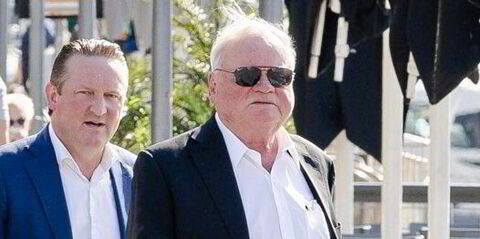Scrubber retrofits have been thin on the ground while container ships in particular were making huge profits.
But Tamara de Gruyter, president of marine systems at Finnish marine technology group Wartsila, believes the tide may be turning.
The market for exhaust gas cleaning systems is still largely centred on newbuildings, the Finnish group said in its third-quarter results statement.
Shipowners have been reluctant to dock their cash-cows during record markets, but boxship freight rates have been declining rapidly in recent weeks.
And it may now be time for some companies to consider fitting a scrubber to take advantage of healthy spreads between high and low-sulphur fuel prices.
“That’s exactly what we are seeing,” de Gruyter told TradeWinds. “It’s not a flood yet, but a small trickle, so that’s already promising.
“We still have scrubbers that need to be installed where we now really see fixed dates.”
De Gruyter said Wartsila is confident that those dates will stay in place rather than move forward.
She explained that owners have been putting off dry-docking in general, not just for retrofits.
“But at some point you have to go to the drydock to fix some other things and then it makes sense to do some retrofits or scrubber installations,” she said. “So we definitely see more of that.”
Fuel spread holding firm

Wartsila has pointed out that following increasing concerns about the global macroeconomic outlook, and the potential impact on demand for oil, crude and bunker prices began to decline towards the end of September, to the benefit of shipowners and operators.
“However, due to various supply-related issues, the price spread between high and low-sulphur fuels has remained at around $300 per tonne on average over the third quarter,” the company said.
On the technology side, Wartsila has unveiled its new Wartsila 25 medium-speed, four-stroke engine for shipping.
The engine is capable of operating on marine fuels, LNG, or on either gas or liquid carbon-neutral biofuels.
But crucially it will be the first of the company’s engine to eventually run on ammonia.
The group said it can easily be upgraded due to its modular design.
Flexible on future fuels
Marine power president Roger Holm said the engine is “still very fresh” and has not yet been delivered to shipyards.
“It’s really perfect for future-fuel flexibility,” he told TradeWinds.
Holm said Wartsila is well on track to have a technical concept ready for a first ammonia engine next year.
He explained that switching the 25 engine over to ammonia would involve changes related to combustion and cylinder head injection.
“That’s what needs to be looked at depending on the final technical solution,” Holm said.
He believes ammonia will be used first for offshore support vessels in Norway. And Japan also has a number of ammonia projects under development.





